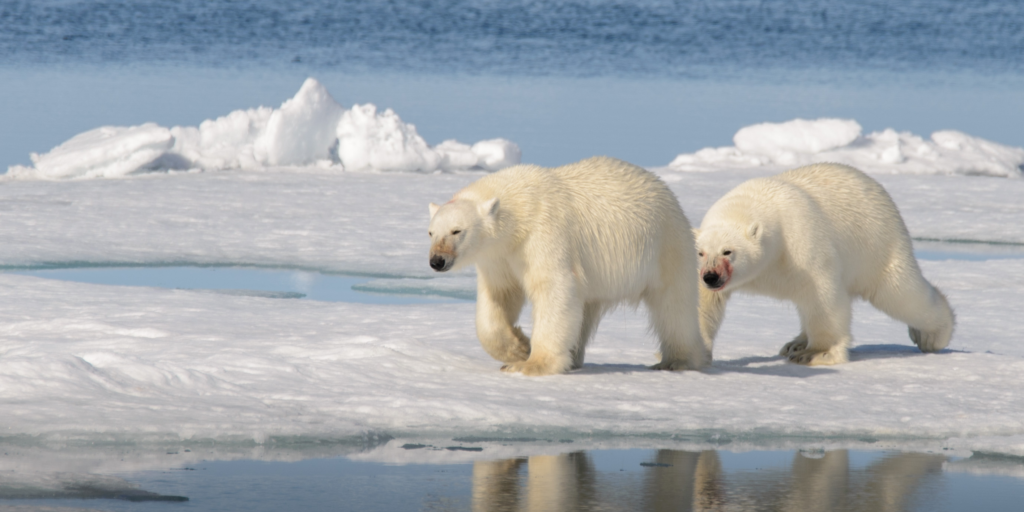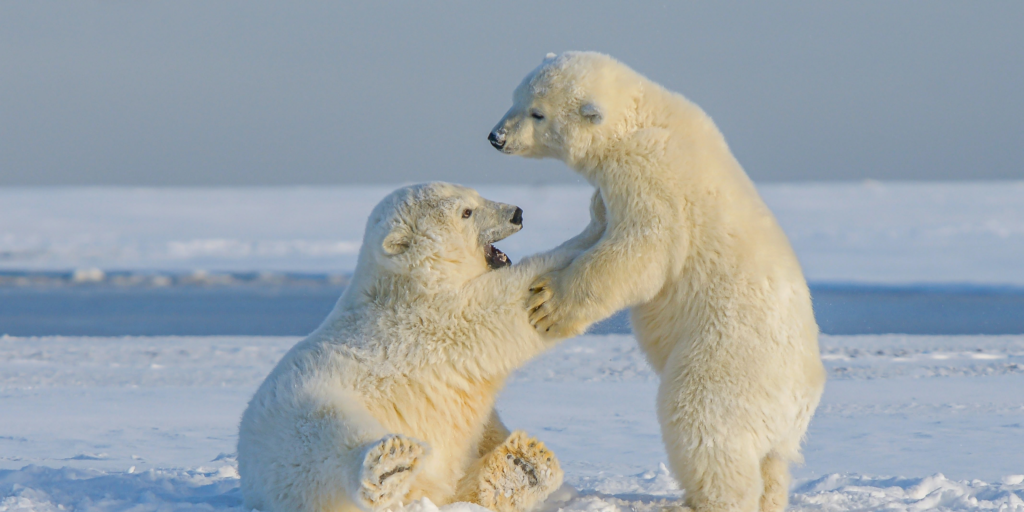
Arctic Sea Ice Day – 15 July
Arctic Sea Ice Day is an annual event observed on 15 July, which was created by Polar Bears International to draw attention to a devastating climate issue. The Arctic is warming two to three times faster than the rest of the planet, causing its sea ice to melt by almost 5% each decade.
If the Arctic continues to warm at its current rate, we will see fewer polar bears in across the Arctic, making this majestic endangered species vulnerable to extinction.
Learn more about how Arctic polar bears depend on sea ice and why it is so essential for their survival.
Habitat
Sea ice serves as a habitat to a wide range of creatures living on, below, and within sea ice, including polar bears. Melting sea ice is increasingly forcing polar bears in many regions of the Arctic to move to land during the summer, meaning they have to swim more frequently and for longer distances to catch seals. More time in the water also means that more energy is required, so they have to work harder than ever for their dinner.
Polar bears are Olympian-grade swimmers, however they are at risk of drowning if the weather turns during a long-distance swim. Longer swims also put cubs at risk.

Food
Sea ice supports the entire Arctic food chain, from tiny microorganisms that form the base of the food chain, to larger animals like Arctic cod, which nourish seals, which in turn become prey for polar bears.
Without sea ice and seals, polar bears have to look elsewhere for food, which can lead them into communities to food sources that don’t offer them such a balanced diet – including garbage – and causes threats to people in those communities.
Sustainability in Action
We have an ongoing commitment to responsible, respectful travel. As founding members of IAATO and AECO, we take our responsibility seriously. We are curious, we are passionate. We care about reducing our footprint environmentally. We are taking real actions for the care of the planet. We are doing MORE to help make a positive impact on the planet.
Hunting
Polar bears rely on sea ice as a physical platform from which to hunt seals. Melting sea ice is reducing the time polar bears have to hunt seals, increasing the time they have to fast and forcing them to rely on their fat stores for longer.
Mating
Polar bears also need sea ice to travel and mate, meaning it is essential for their reproduction and survival!
Melting sea ice doesn’t just impact polar bears, it’s bad for people too, because it keeps our planet cool. While the Arctic has already experienced significant sea ice loss, it’s not too late to help protect it and the species that depend on it, by having important conversations around climate warming and working together to support green initiatives.
Explore the Arctic in search of the mighty polar bear






